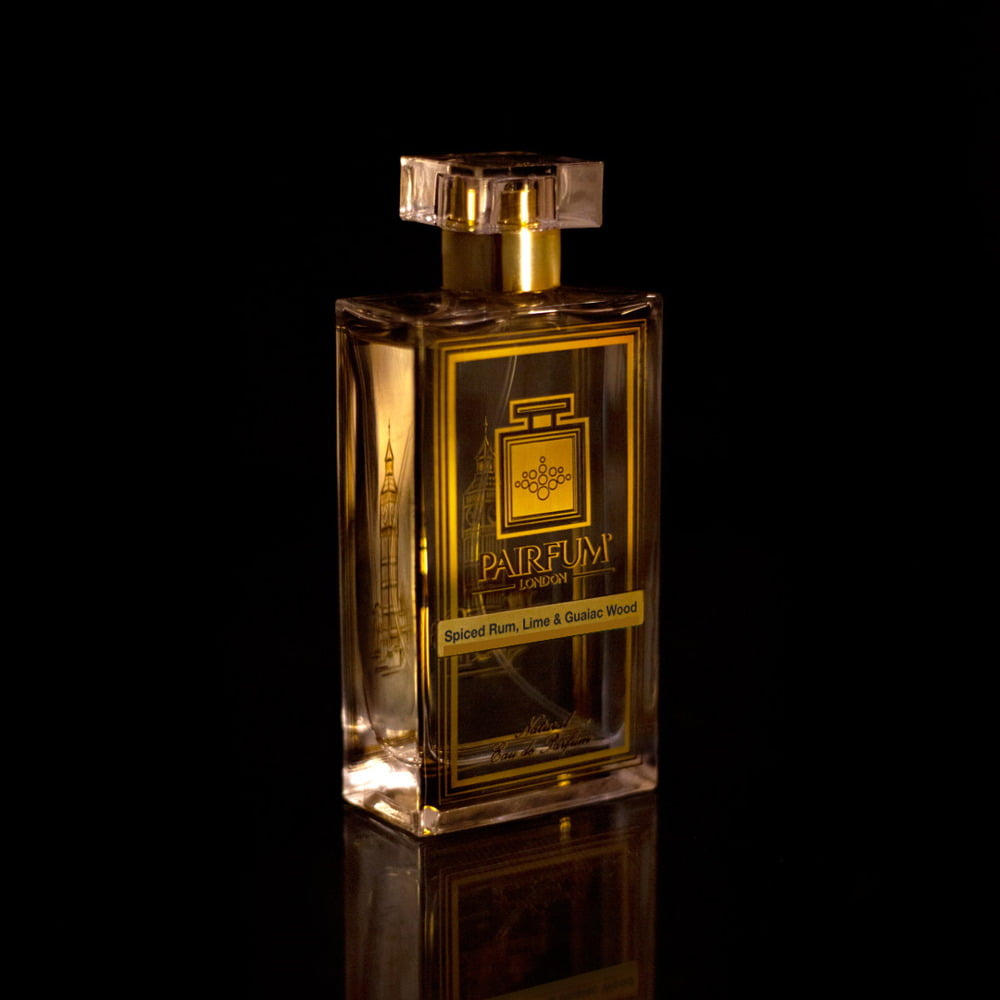Lime in Perfume: The Vibrant Spirit of Fine Fragrance

Lime perfume notes bring a lively, fresh aroma that is both invigorating and delightful. Known for its distinct citrusy zest, lime has become an indispensable staple in countless fragrances across the globe. Its sharp, clean, and utterly vibrant profile makes it a perennial favourite among master perfumers seeking to infuse their creations with a vibrant burst of unparalleled freshness.
The journey of lime in perfumery is rich, spanning centuries. Ancient civilisations, recognising its refreshing aroma, incorporated lime into various aromatic applications. Over time, as trade routes expanded, lime seamlessly found its way into the heart of European perfumery, adding a unique and instantly recognisable citrus note that truly stands out in any blend. This versatile citrus fruit has a fascinating history.
Lime notes are remarkably versatile. They can be expertly woven into compositions alongside other bright citrus fruits, delicate floral accords, or even grounding woody elements. This adaptability makes lime an essential ingredient for crafting a diverse spectrum of perfumes, ranging from light, airy, and ephemeral colognes to those that are deep, complex, and enduring. The meticulous methods employed to extract lime ensure its purest aroma is preserved, allowing perfumers to harness its full, vibrant potential, creating a truly perfect scent.
The Botanical Roots and Global Journey of Lime
To truly appreciate lime in perfumery, understanding its botanical origins and global spread is insightful. The term 'lime' actually encompasses several species of citrus, primarily the Persian lime (Citrus x latifolia) and the Key lime (Citrus x aurantifolia), also known as Mexican or West Indian lime. Believed to have originated in the Indo-Malay Archipelago, limes embarked on a journey across continents, carried by Arab traders, before reaching Europe during the Crusades and later the Americas with explorers in the 16th century.
In its natural habitat, particularly in tropical and sunny places, lime trees thrive, yielding their small, typically green fruits. The difference between common supermarket limes and smaller, more aromatic Key limes lies in their size, intensity of flavour, and fragrance. While some varieties, like the Rangpur lime (Citrus limonia), even boast a green rind with vibrant orange flesh, showcasing the diversity within this fascinating family of plants. This rich history cemented lime’s place not just as a culinary staple but as a prized aromatic commodity, influencing everything from food to fragrance.

The History of Lime in Perfumery: From Ancient Rituals to Modern Classics
Lime has been revered for its refreshing and zesty aroma for millennia. From ancient times, lime was valued for its invigorating fragrance. Ancient civilisations in the Middle East and Asia utilised lime in various aromatic applications, often for its purifying and uplifting qualities. In traditional rituals, the crisp and revitalising aroma of lime was believed to cleanse and purify surroundings, enhancing spiritual and sensory experiences.
During the Renaissance period, as new ingredients arrived in Europe, lime gained significant prominence in European perfumery. Perfumers quickly recognised its ability to impart a bright, lively, and effervescent top note to their creations. Lime’s remarkable capacity to blend harmoniously with both delicate floral and robust woody notes made it an incredibly versatile choice, paving the way for its inclusion in many nascent classic perfumes. This era marked a crucial step in lime’s transition to a globally appreciated perfumery ingredient. Many a designer has since incorporated this element.
In modern times, lime remains an enduring staple in the perfumer’s palette. Its vibrant and utterly fresh aroma continues to be a popular choice for contemporary perfumes, frequently featured in revitalising summer fragrances, invigorating sports scents, and even sophisticated evening blends. The timeless appeal of lime in perfumery lies in its consistent ability to evoke a sense of clarity, freshness, and vitality, securing its status as a cherished and essential ingredient for any captivating scent.
The Olfactory Profile of Lime: A Symphony of Zest and Greenery
Beyond its general classification as a citrus note, lime offers a complex, deeply nuanced scent profile that perfumers skilfully utilise to great effect in a perfume. The immediate impression of lime is typically bright, sharp, and intensely zesty, often evoking the sensation of freshly squeezed juice or the pungent burst from a grated peel. This initial burst is profoundly invigorating and uplifting, setting a vibrant, effervescent tone for the entire fragrance. It provides a refreshing blast that awakens the senses.
As the lime note develops on the skin, subtle green and sometimes slightly bitter undertones can emerge, particularly from extracts derived from the outer peel. These nuances add a layer of sophistication and prevent the note from being overly simplistic or one dimensionally sweet. Depending on the specific varietal of lime used and the meticulous extraction method, some lime notes can also carry a hint of a delicate floral, a peppery spice, or even a subtle woody nuance. The inherent crispness and natural acidity of lime make it an excellent top note, providing an immediate, captivating impact that draws the wearer in before the heart and base notes gradually unfold. Its natural vivacity lends a clean, almost sparkling, effervescent quality to compositions, making it a cornerstone for fresh and invigorating fragrances. This detail in its scent profile is what makes it so appealing.

Types of Lime Notes Used in Perfume: A Spectrum of Freshness
Lime notes in perfumes come in various forms, each offering a unique aspect of its fresh and zesty aroma. Understanding these types helps to appreciate their versatility and profound impact on a fragrance's character. Every lime perfume benefits from this variety.
Natural Lime Notes
Fresh Lime: Typically derived from the juice of the lime fruit through cold pressing, fresh lime notes provide a bright, tangy, and often slightly sweet aroma. This type of lime is frequently used to impart an immediate, juicy burst of freshness to a fragrance's opening.
Lime Zest: Obtained from the outer, oil rich peel of the lime through cold pressing or distillation, lime zest notes offer a more intense, sharp, and even slightly bitter citrus aroma. The essential oils concentrated in the zest deliver a punchy, invigorating freshness, a true zesty lime essence, highly prized by perfumers.
Lime Blossom/Linden: While not extracted from the fruit, the delicate blossoms of the lime tree (often referred to as linden or Tilia) offer a distinct, honeyed, slightly green, and powdery floral note. This provides a softer, more nuanced interpretation of ‘lime’ and is used to add subtle, sophisticated freshness and a touch of natural elegance to a perfume composition. It often features with lily or jasmine.
Blended Lime Notes and Accords
Perfumers often combine lime with other elements to create a harmonious and intriguing scent profile, amplifying certain facets or creating new olfactive experiences crucial for a compelling fragrance.
Lime and Floral: Expertly blending lime with classic floral notes such as jasmine, lily, or rose creates a balanced and uplifting fragrance. The vibrant citrus burst of lime provides a lively, effervescent top note, while the floral elements introduce depth and softness.
Lime and Woody: When lime is blended with robust woody notes like cedar, sandalwood, or vetiver, the result is a fragrance that is both strikingly fresh and deeply grounded. The piercing brightness of the lime provides a sharp contrast, beautifully complementing the warm, earthy, and sometimes smoky undertones of the wood, creating a sophisticated and well rounded aroma. Vetiver provides an excellent anchor for the citrus notes.
Lime and Herbal: Pairing lime with aromatic herbs such as basil, mint, coriander, or even thyme offers a crisp, green, and often distinctly aromatic fragrance. The herbal notes enhance the fresh, cool, and sometimes spicy qualities of lime, making it perfect for revitalising, contemporary, and often unisex perfumes. The classic combination of lime basil and mandarin is a prime example of this successful synergy, offering a crisp, clean scent. A strong basil note often defines these types of blends, providing a peppery basil kick. The delivery of these scents is always invigorating.
Lime and Aquatic: When combined with marine or aquatic notes, lime contributes to a wonderfully refreshing, clean, and airy scent profile. This evokes a cool sea breeze, sparkling ocean water, or a serene waterfall, making it a popular choice for invigorating summer scents and sports fragrances. Imagine a vibrant burst of ocean air.
Synthetic Lime Notes
Lime Aldehyde: These synthetic molecules are crafted to replicate specific facets of the fresh and tangy aroma of natural lime. Synthetic versions are often utilised in modern perfumery for enhanced stability, longevity, and consistency, ensuring a reliable and often more potent lime fragrance throughout the wear of the perfume. They also offer greater control over specific aromatic nuances and can provide a sustainable alternative to natural extracts. These ingredients are vital.
Each type of lime note contributes something special to a perfume, whether it’s the pure, exhilarating zest of fresh lime, the subtle elegance of lime blossom, or the complex interplay of lime within a blended accord. The exceptional versatility of lime truly makes it a valuable and cherished component in creating an extensive variety of refreshing, vibrant, and captivating perfumes.

Methods of Extracting Lime Notes: Capturing the Citrus Essence
Capturing the fleeting essence of lime requires various sophisticated extraction techniques, each designed to preserve its fresh and zesty aroma as accurately as possible. These methods are crucial in ensuring the vibrant qualities of lime are translated into the perfumer's palette. These essential ingredients require careful handling.
Common and Traditional Extraction Techniques
Cold Pressing (Expression): This is the most direct and traditional method for extracting essential oil from the lime peel. Mechanically pressing the outer rind yields a vibrant essential oil that beautifully captures the authentic, true to fruit, zesty aroma of lime. This method is highly preferred for producing high quality lime extracts, maintaining the bright, almost juicy, character. It ensures a strong initial freshness.
Steam Distillation: This technique involves passing hot steam through the lime peels or sometimes the whole fruit. The steam vaporises the volatile aromatic compounds, which are then condensed back into a liquid. The essential oil separates and can be collected. Steam distillation is effective in preserving lime’s bright and energising aroma, though the resulting oil can sometimes have a slightly different character than cold pressed, often less photosensitive. This is a common way to achieve a refreshing blast of scent.
Modern and Advanced Extraction Techniques
Supercritical CO2 Extraction: An advanced technique, this method utilises carbon dioxide under high pressure and controlled temperature to extract aromatic compounds from lime. This process is highly efficient and ensures a pure, high quality extract, capturing a comprehensive aromatic profile very true to the natural scent of the fresh lime. It leaves no solvent residues and operates at lower temperatures, preserving delicate notes, making it ideal for a luxury perfume.
Solvent Extraction: While less common for lime compared to more fragile floral materials, this method involves using food grade solvents to dissolve the aromatic compounds from lime peels. After evaporation, a concentrated lime extract is obtained, capturing a deeper, richer essence of lime, sometimes with more waxy or fatty nuances.
Molecular Distillation: This sophisticated technique employs low temperatures and high vacuum to separate specific aromatic compounds from lime oils. It allows perfumers to isolate and refine particular fractions of the lime aroma, ensuring that delicate or unwanted components are removed, resulting in a highly purified and refined lime note ideal for premium fragrances.
Enfleurage: A very old and labour intensive technique, though rarely used today for lime, enfleurage traditionally involved fresh plant material being pressed onto layers of purified fat, which would absorb the aromatic oils. The fats were then washed with ethanol to separate the oil. While impractical for large scale lime oil production, it captured a unique, deep, and rich lime aroma.
Each method offers distinct advantages and yields a slightly different olfactive profile, allowing perfumers to select the best extraction technique to capture the desired lime aroma for their intricate creations. The choice of extraction method significantly influences the final scent profile of the lime note in a perfume, affecting its initial freshness, its longevity, and its specific aromatic nuances. The successful delivery of the intended scent relies on this.
The Dynamic Role of Lime in Perfume Composition and Fragrance Families
Lime typically shines as a vibrant top note in perfume compositions, providing that immediate, exhilarating vibrant burst of freshness that instantly captures attention. Its inherent volatility means it is one of the first notes to greet the nose, evaporating relatively quickly to make way for the developing heart and grounding base notes. However, its initial impact is crucial in setting the overall tone, character, and energetic quality of a fragrance. The fragrance family of citrus scents often relies heavily on this initial impact.
In lighter, more ephemeral compositions such as colognes or summer splashes, lime can be a dominant feature, sustained by clever blending with longer lasting citrus molecules or other green accords. In contrast, within more complex and structured fragrances, lime often serves as a luminous introduction, offering a sparkling counterpoint to richer florals, warm resins, or robust woods like vetiver and patchouli. Its crispness and natural acidity also make it an invaluable harmoniser, capable of lifting heavier notes, introducing sparkling clarity to otherwise dense formulations, and preventing a fragrance from becoming overly sweet or cloying. It injects a contemporary and dynamic feel into both classic and modern perfume structures, providing a refreshing twist and a refreshing heart. A touch of amber or a hint of lemon or bergamot can further enhance these compositions.
The citrus fragrance family, often described as 'Hesperidic', is defined by lively, sunny fragrances dominated by invigorating citrus notes such as bergamot, orange, mandarin, and of course, lime. This family is known for its refreshing and uplifting qualities, making it ideal for daily wear, especially in warmer climates. The interplay of lime with other citrus fruit like lemon and mandarin is key to many popular products within this fragrance family.

Iconic Perfumes with Lime Notes
Lime notes have enriched many iconic perfumes, adding a fresh and vibrant touch that enhances the overall aroma. Here are a few notable perfumes that feature lime prominently.
Famous Lime-Infused Perfumes
- Dior Eau Sauvage: This classic fragrance from Dior features lime notes blended with basil and rosemary. The lime adds a citrusy freshness that brightens the herbal and woody undertones.
- Jo Malone London Lime Basil & Mandarin: Known for its signature bright and fresh aroma, this perfume blends lime with basil and mandarin. The lime notes provide an invigorating top note that pairs well with the spicy and sweet elements.
- Guerlain Aqua Allegoria Limon Verde: This fragrance combines lime with fig and tropical green notes. The lime adds a zesty freshness that makes the perfume perfect for summer days.
More Notable Mentions
- Hermès Un Jardin Sur Le Nil: Blends lime with green mango and lotus. The lime provides a sparkling fresh top note that enhances the exotic and aquatic elements.
- Acqua di Parma Colonia: Lime notes blend with citrus fruits and floral touches. The lime adds brightness to this timeless and elegant fragrance.
- Creed Virgin Island Water: This perfume combines lime with coconut and white rum. The result is a refreshing and exotic fragrance where lime stands out with its lively and tropical vibe.
These iconic perfumes demonstrate lime's versatility and enduring popularity. Lime adds a bright and refreshing note that makes any fragrance lively and appealing.
Beyond the Bottle: The Wider World of Lime and Associated Products
The aromatic and therapeutic properties of lime extend far beyond fine perfumery. Lime essential oil is a star in aromatherapy, renowned for its uplifting and mood boosting qualities. Its invigorating scent is believed to help alleviate feelings of stress and mental fatigue, promoting clarity. Diffused in a home or office, for instance through elegant reed diffusers, it creates an atmosphere of revitalisation and positive energy. Such reed diffusers offer a continuous delivery of scent.
Culinary uses for lime are widespread and celebrated globally. From zesty key lime pies to the indispensable squeeze of lime in Thai curries and Mexican salsas, its tangy flavour brightens and balances countless dishes and beverages. Its versatility in cooking mirrors its adaptability in fragrance.
Furthermore, lime oil possesses notable antimicrobial and antiseptic properties, making it a natural and effective ingredient in various cleaning products and personal care items, including skincare. While not a direct fragrance product, the quality of grooming essentials like a luxury shaving brush or aftershave can be enhanced by such natural ingredients. These related product applications highlight the pervasive influence of this remarkable citrus fruit.

A Unique Interpretation of Lime in Perfume with Pairfum London
For those drawn to the multifaceted allure of lime, an exceptional new fragrance awaits discovery. Imagine the bright, invigorating zest of lime harmoniously blended with the warming embrace of spiced rum and the deep, smoky elegance of guaiac wood. This sophisticated composition offers a distinctive twist on traditional citrus scents, inviting you to experience lime in a completely new light. It is a true exploration of contrasting notes that come together to create an unforgettable olfactory journey.
Spiced Rum, Lime & Guaiac Wood – Eau de Parfum by Pairfum London
This Connoisseur’s accord opens with the intense aroma of Rum, nuances of Lime & Lemon and a radiant combination of Nutmeg & Pepper. The heart is deep and rich with Tuberose, Iris and Vintage Leather. A fond of Guaiac Wood, Cedar, Golden Amber, Vanilla Pod and Musk complete this luxuriously fluid fragrance.
Conclusion
Lime, with its vibrant history and multifaceted aromatic profile, remains an unequivocally cherished ingredient in the world of perfumery. Its fresh, zesty, and often complex aroma has not only stood the test of time but continues to captivate master perfumers and discerning wearers alike. Understanding the botanical origins of this versatile citrus fruit, the nuanced types of lime notes available, and the sophisticated methods of extraction gives us a profound appreciation for the artistry and dedication that goes into capturing this vibrant scent.
From ancient purifying rituals to modern day masterpieces, lime continues to infuse perfumes with an undeniable lively and invigorating touch. Iconic fragrances prominently featuring lime underscore its remarkable versatility, whether artfully paired with delicate floral accords like jasmine, robust woody elements such as vetiver or patchouli, or invigorating herbal notes like basil and mandarin. The timeless appeal of lime is evident in its consistent ability to provide a clean, refreshing, and utterly distinctive aroma that effortlessly stands out, making it an indispensable and beloved part of the perfumer's creative palette. The consistent delivery of such a refreshing fragrance is key to its success.
https://www.pairfum.com/lime-in-perfume/?fsp_sid=7394
#ARTISANPERFUMERSOFLONDON #CITRUS #CITRUSFRAGRANCE #FRAGRANCE #FRESHLIME #LIMEFRAGRANCE #LIMEPERFUME #LONDONFRAGRANCE #LOVE #NATURAL #NICHE #PERFUME #PERFUMELOVERS
Comments
Post a Comment